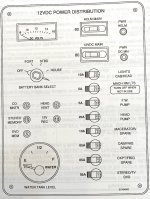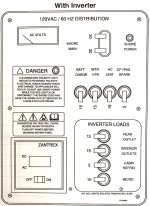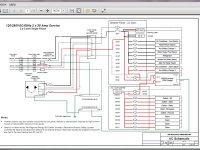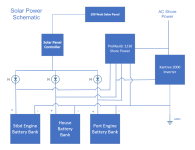- Joined
- Jul 18, 2011
- Messages
- 18,808
Greetings,
My new-2-me boat, a 2016 Cruisers Yacht 338 Mid-cabin Bowrider has shore power and an inverter system. I am not sure how is all is supposed to work. I have an AC outlet in the cabin and another AC outlet in the head compartment.
It seems like the AC outlets want to run off the inverter system and not shore power. I also have 2 refrigerators on the boat that could run off of AC or DC. Of course running everything from the inverter system is power limiting and seemingly inefficient, if you have shore power available. The Owner's Manual is a bit vague on the inverter system, and I have not investigated too much.
I am just wondering what is the typical setup for a boat? Does all the the AC power have to come from the inverter? Or . . . should I be looking for some sort of a switch that allows AC directly from shore power? (when I'm connected to shore power)
Most of the AC stuff, I would want to use only when I am connected to shore power, and only use the inverter in a pinch.
I plan on installing a microwave oven in the cabin, and I'd like to get this inverter/shore power stuff figured out beforehand.
TIA for any guidance on these systems.
My new-2-me boat, a 2016 Cruisers Yacht 338 Mid-cabin Bowrider has shore power and an inverter system. I am not sure how is all is supposed to work. I have an AC outlet in the cabin and another AC outlet in the head compartment.
It seems like the AC outlets want to run off the inverter system and not shore power. I also have 2 refrigerators on the boat that could run off of AC or DC. Of course running everything from the inverter system is power limiting and seemingly inefficient, if you have shore power available. The Owner's Manual is a bit vague on the inverter system, and I have not investigated too much.
I am just wondering what is the typical setup for a boat? Does all the the AC power have to come from the inverter? Or . . . should I be looking for some sort of a switch that allows AC directly from shore power? (when I'm connected to shore power)
Most of the AC stuff, I would want to use only when I am connected to shore power, and only use the inverter in a pinch.
I plan on installing a microwave oven in the cabin, and I'd like to get this inverter/shore power stuff figured out beforehand.
TIA for any guidance on these systems.























